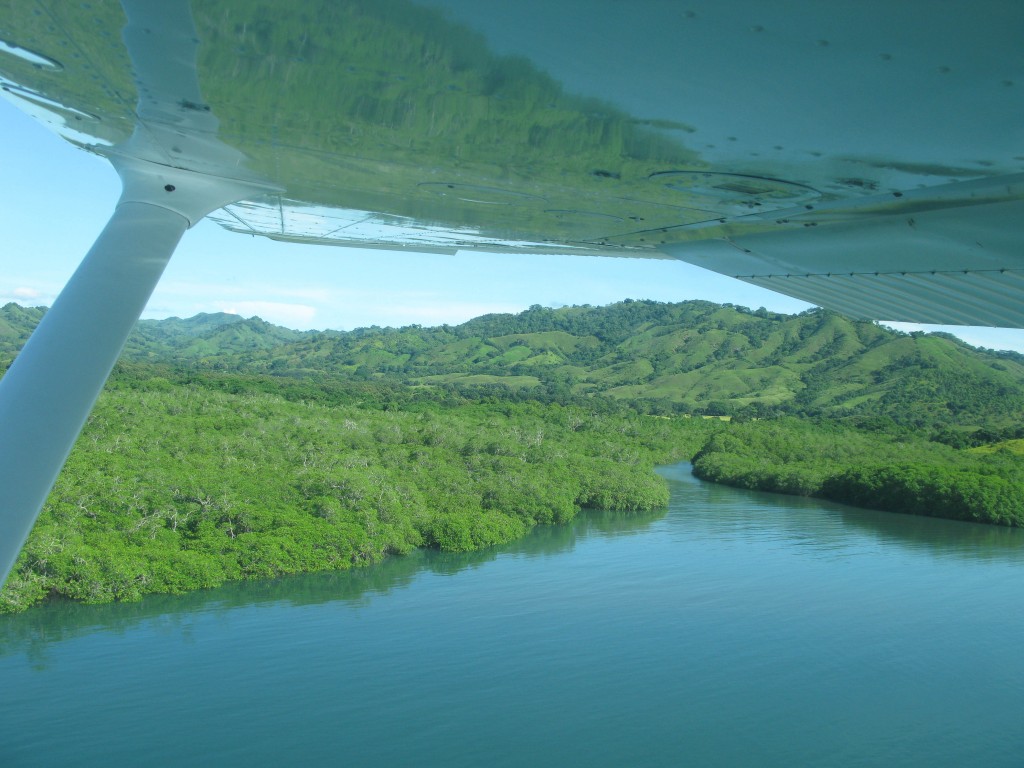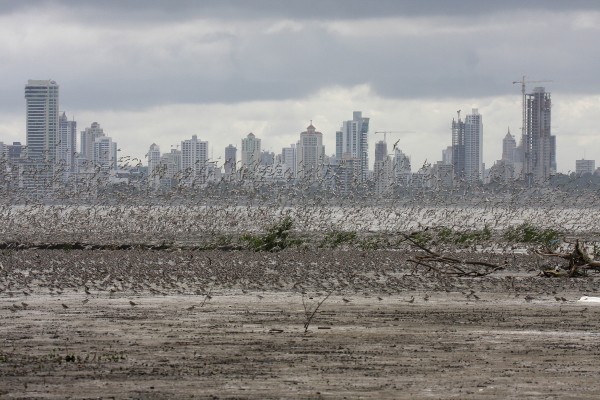Aerial survey of the Pacific coast of Panama for waterbirds completed
Walter Post Smith and his Kiptopeke Chronicles
October 10, 2008Whimbrel migration tracking
October 12, 2008
Written by Bryan Watts
October 11, 2008
A research team from The Center for Conservation Biology (CCB) recently returned from Central America, having successfully completed an aerial survey of the Pacific Coast of Panama to estimate and map waterbird populations during the peak of fall migration. Flying at an altitude of only 20-30 m in a Cessna with pilot Carlos Diaz the survey team flew 1,565 km of shoreline in 3 days between 21 and 24 October, 2008. More than 490,000 shorebirds, seabirds, herons and egrets were counted and mapped. Survey flights were supported by the United States Department of Defense Legacy Program and CCB, with assistance from the Panama Audubon Society and the Smithsonian Tropical Research Institute.

View from front of plane on survey of waterbirds along the coast of Panama. All intertidal habitats along nearly 1,000 miles of coastline were surveyed. Photo by Bryan Watts.

Mangrove-lined estuary along the Pacific coast of Panama. Such sites supported dense assemblages of waterbirds and accounted for 98% of the birds detected. Photo by Bryan Watts.
The survey identified several key estuaries that supported high densities of waterbirds including the Golfo de San Miguel, Bahia de Panama, Bahia de Parita, Golfo de Montijo, and Bahia de Muerta. Collectively, these productive estuaries were found to support 98% of the waterbirds detected. All bird groups reached their highest densities along the shoreline of the Bahia de Panama. The 30-km segment just east of Panama City accounted for less than 2% of the Pacific Coast shoreline but supported 72.5% of all birds detected. Waterbird densities within this small area averaged 12 birds per meter of shoreline making it one of the most significant waterbird conservation areas throughout the Americas.

A flock of semipalmated plovers and western sandpipers on mudflats in Panama Bay (Bahia de Panama), near Panama City. Photo by Bart Paxton.
For many groups of migrant birds, Panama is the most significant continental crossroad in the western hemisphere. Hundreds of millions of birds pass through this small country each year on their passage between breeding and wintering grounds. The annual cycle of many waterbird species appears to be structured around the resources provided by the Pacific Coast of Panama. The Bahia de Panama, in particular, appears to play a prominent role in the structure of waterbird migration systems throughout the Americas. CCB has dedicated efforts over the last ten years to the study and preservation of these key waterbird migration grounds. Protection of habitats and resources within this site is critical to the conservation of waterbirds on a hemispheric scale.

A peregrine falcon scans the flock of semipalmated plovers and western sandpipers. Photo by Bart Paxton.



